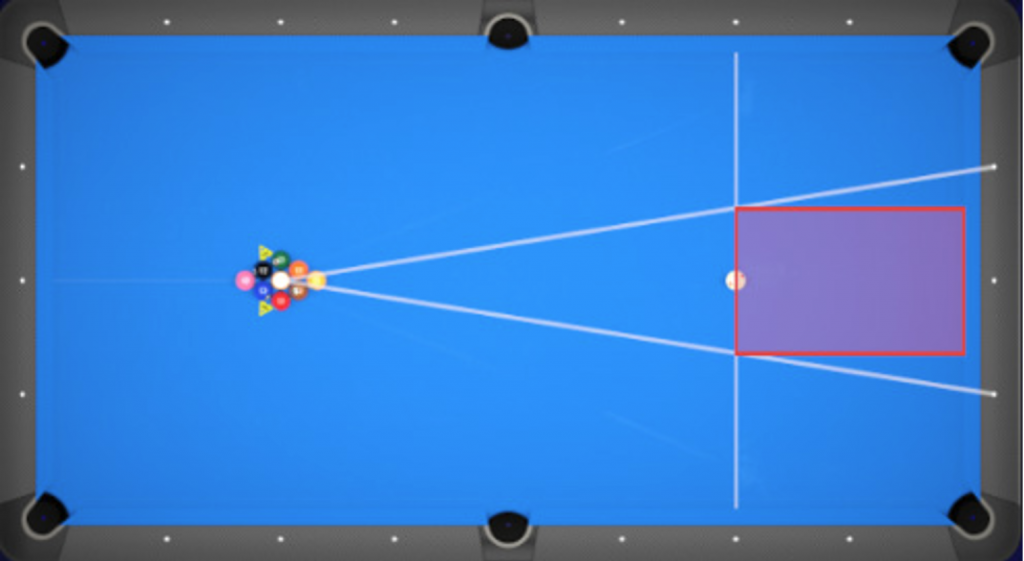BPT 9Ball Tour (2025-26) regulations
9ball (forward “matchroom” rack)
9Ball played, with nine balls numbered from 1 to 9 and the cue ball.
On each shot, the first object ball contacted must be the lowest-numbered ball on the table. The player who legally pockets the 9 ball wins.
1 · Lag for break
The order of play is determined by lagging (shooting the ball close to the cushion). The winner decides whether to break or to let the opponent break.
2 · Racking the balls
Balls are racked in a diamond shape, with the 1 ball in front and the 9 ball in the center on the spot. The remaining balls are placed randomly (they will be placed touching the short rail and arranged from the outside towards the inside).
This may be done using a template rack or without, depending on availability (whenever available, it must be used).
Players are not allowed to inspect the rack or its position. If a player believes that the rack is being manipulated, they must call the referee, who will determine if it is correct.
If manipulation is confirmed, the player who racked the balls will receive a warning. On the second warning within the same day, the player will lose one rack. On the third warning, they will lose the match they are playing.
If the player who requested the referee’s intervention is found to be wrong, the warnings and sanctions will be applied to that player instead.
3 · Break shot (Break Box)
All events of the BPT 9Ball Tour are played with a Break Box from which the player must execute the break legally.

All players must execute a powerful break when participating in the BPT 9Ball Tour events. The determination of what constitutes a powerful break will be at the discretion of the tournament officials. If a break is not sufficiently strong, it may result in a warning from the referee. A second warning will result in a foul and be considered ball in hand for the opponent.
To continue at the table, it is necessary to pocket a ball and for the sum of the balls pocketed and the balls that contact a cushion to be at least four.
The player who breaks, as long as the previous rule has been met, may play a push-out; if no ball is pocketed, the next player may announce a push-out if they so choose.
The incoming player may accept or refuse the push-out if they consider it convenient.
If the breaking player does not comply with the first rule, it will be a foul and ball in hand for the opponent.
If the cue ball is placed outside of the break box, the player may be warned, and if they still break from there, it will be considered a foul and ball in hand for the opponent.
If the breaking player pockets the 9 ball on the break and the first rule has been fulfilled, the rack will be considered won by that player.
4 · Second shot (Push Out)
On the shot immediately following a legal break, the player at the table may declare a “push-out.” The player must announce their intention to play it, and the following rules will not apply:
– No contact the lowest numbered legal object ball first.
– Failing to drive a ball to a cushion after contact.
If no foul is committed during the push-out, the opponent chooses who will take the next shot.
5 · Playing continuation
If the player legally pockets any ball on a shot (exception: “push-out”), they will continue at the table.
If they legally pocket the 9 ball on any shot (exception: “push-out”), they win the rack.
If the player does not pocket any ball or commits a foul, the turn passes to the opponent and, if no foul occurred, the cue ball must be played from where it lies.
6 · Re-spotting balls
If the 9 ball is pocketed on a foul or on a “push-out,” or if it is driven off the table, it will be re-spotted on the foot spot.
No other object balls are re-spotted.
If any ball remains hanging in a pocket and drops after 5 seconds have passed, it will be re-spotted as close as possible to its original position.
7 · General fouls
If the player commits a foul, the turn passes to the opponent and the opponent has ball in hand (the cue ball may be placed anywhere on the table).
The following situations are fouls:
- Pocketing the cue ball or knocking it off the table.
- Contacting first a ball that is not the legal object ball (the first ball contacted must be the lowest‑numbered ball on the table).
- Failing to drive a ball to a cushion after striking a legal object ball.
- Not having at least one foot on the floor.
- Knocking any ball off the table (the only ball that is re‑spotted is the 9 ball).
- Touched ball.
- Double hit / miscue.
- Push shot.
- Playing while balls are still in motion.
- Incorrect placement of the cue ball.
- Resting the playing cue on the table.
- Playing out of turn.
- Slow play.
8 · Serious fouls
In the case that a player commits 3 consecutive fouls, the penalty is the loss of the rack.
In the case of unsportsmanlike conduct, the sporting director will apply, upon the referee’s report, the corresponding penalty.
9 · Stalemate
If there is a stalemate in the completion of the rack, the rack will be replayed, with the same player breaking who did so previously.
